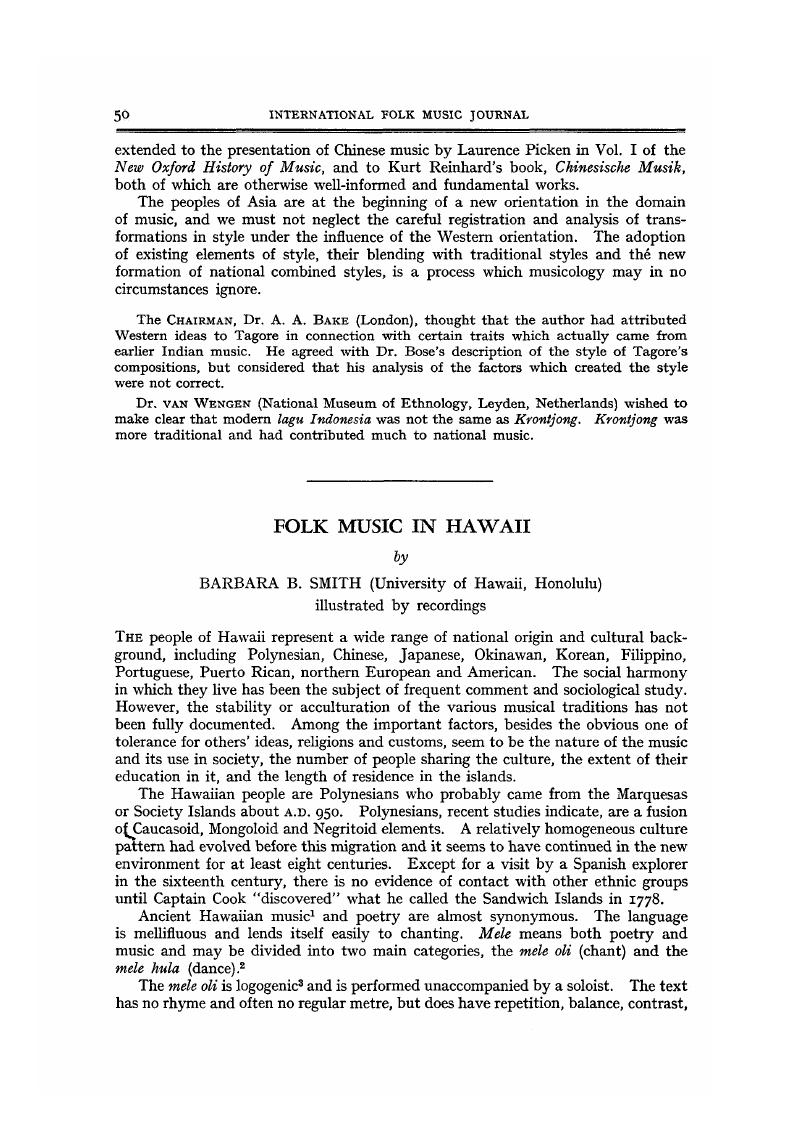Published online by Cambridge University Press: 07 March 2019

1. “Ancient Hawaiian music” signifies the primitive Polynesian music of the Hawaiian people.
2. H. H. Roberts, Ancient Hawaiian Music (B. P. Bishop Museum Bulletin 29, 1926).
3. The music is dependent upon the words.
4. “s” is not used to form the plural in the Hawaiian language, but often appears in modern usage.
5. Burrows, E. G., Songs of Uvea and Futuna (B. P. Bishop Museum Bulletin 183, 1945).Google Scholar The spelling of ancient Hawaiian instruments varies considerably in modern usage. I have followed those in Pukui, Mary Kawena and Elbert, Samuel H., Hawaiian-English Dictionary (University of Hawaii Press, 1957).Google Scholar
7. Te Rangi Hiroa (Peter H. Buck), Arts and Crafts of Hawaii (Bishop Museum Press, 1957).
8. “Old Hawaiian music” should not be confused with “Ancient Hawaiian music.”
9. One of Cook's men was James Burney, son of the famous English music historian, Charles Burney.
10. Lind, Andrew W., Hawaii's People (University of Hawaii Press, 1955).Google Scholar
11. Sad, sentimental love songs popular in the Philippines. The name is derived from “Kun Hinhi man,” which means “It cannot be.”